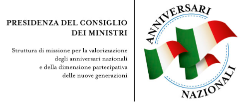Cospito, Giuseppe
The Rhythm of Thought in Gramsci
A Diachronic Interpretation of Prison Notebooks
Leiden; Boston: BRILL, 2016, XIII, 248 pp.
Many scholars have recently shown great interest in a diachronic re-examination of Antonio Gramsci s main theoretical-political categories in the Prison Notebooks. This method would uncover the origins and development of Gramsci s concepts using the same method that Gramsci himself believed would allow us to grasp the rhythm of thought in Marx. The present work embraces this perspective and puts it to work in two ways. Its first part analyzes the relation between structure and superstructure and the concepts of hegemony and the regulated society. Its second part extends the diachronic analysis to the conceptual pairings which represent alternatives to structure-superstructure, encompassing questions of political and cultural organisation as well as the relation between Gramsci and the major proponents of historical materialism (Marx, Engels, Lenin). English translation of Il ritmo del pensiero: per una lettura diacronica dei -Quaderni del carcere- di Gramsci published by Bibliopolis, Naples (2011)."
A Note on the Text
Preface: Questions of Method
PART ONE: PHILOSOPHY-POLITICS-ECONOMICS
1. Structure and Superstructures
1.1. Working hypothesis
1.2. The 'Bukharin' phase (from the party school to Notebook 4, §§ 12 and 15: 1925-30)
1.3. The 'centrist' thesis from the end of 1930 (Notebook 4, § 38)
1.4. The 'crisis' of 1931 (Notebook 7)
1.5. Moving beyond the architectural metaphor (Notebook 8: end of 1931 - beginning of 1932)
1.6. The 'inertia' of the old formulations (Notebooks 10, 11 and 13: 1932-3)
1.7. 'Unended Quest' (Notebooks 10, 11, 14, 15 e 17: 1932-35)
1.8 Provisional conclusions
2. Hegemony
2.1. Introduction
2.2. 'Posing the issue'
2.3. Hegemony and civil society
2.4. Hegemony and the intellectuals
2.5. Hegemony and the party
2.6. The sources of Gramsci's concept of hegemony
2.7. A (re)definition of Gramsci's concept of hegemony
3. Regulated Society
3.1. Philosophy-Politics-Economics
3.2. 'Importuning the texts'
3.3. The regulated society 'from Utopia to science'
3.4. Towards a new Reformation?
3.5. Gramsci as critic of the 'critical economy'
3.6. Toward 'a new economic science'
PART TWO: THE ANALYSIS OF SEVERAL INTERNAL DYNAMICS OF THE NOTEBOOKS
4. The 'Alternatives' to Structure-Superstructure
4.1. 'Quantity and quality'
4.2. 'Content and form'
4.3. 'Objective and subjective'
4.4. 'Historical bloc'
5. The Gradual Transformation in Gramsci's Categories
5.1. Methodological premise
5.2. Organic centralism; Postilla
5.3. Common sense and/or good sense
5.4. Civil society
6. Gramsci and the Marxist Tradition
6.1. 'Marx, the author of concrete political and historical works': Caesarism and Bonapartism
6.2. Engels and the Marxist vulgate
6.3. Conclusion: Gramsci, from Lenin to Marx
Bibliography
Index
| Series | Historical Materialism Book (Book 130) |
| Lingua | eng |
| Nomi |
[author] Cospito, Giuseppe [traduttore] Ponzini, Arianna |
| Soggetti |
Quaderni del carcere, Struttura
Prison Notebooks structure
|
Traduzione di

